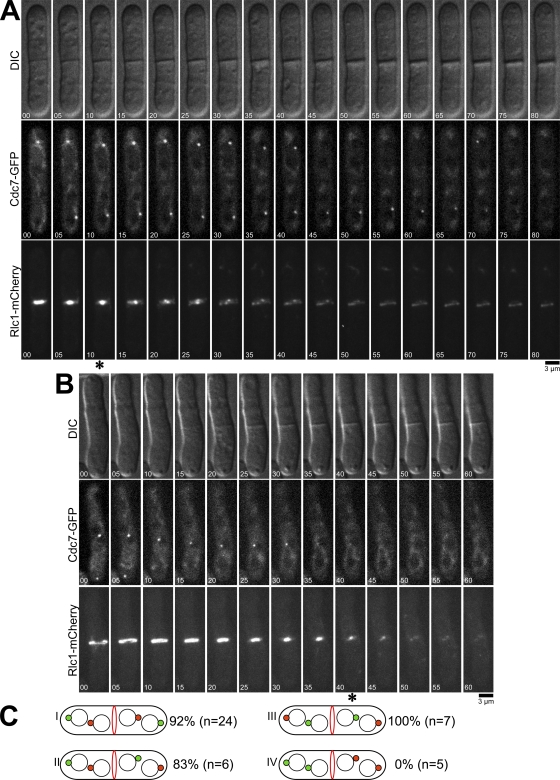Figure 7.
Analysis of dikaryons shows that asymmetric SIN signaling is important for SIN inactivation. cdc11-123 cdc7-GFP rlc1-mCherry cells were grown in YE at 25°C, shifted to 36°C for 2.5 h to allow binucleate cells to form, and then returned to 25°C for an additional 2 h and imaged by time-lapse microscopy at 25°C. (A and B) Cells with symmetric (A) or asymmetric (B) SIN activation are shown. Asterisks indicate completion of actomyosin ring contraction. Time is indicated in minutes. (C) Distribution patterns of Cdc7-GFP (green circles) during late anaphase and telophase in cdc11-123 dikaryons. Percentages of cells with a prolonged SIN activity are shown. n indicates the total number of cells of each type imaged.

